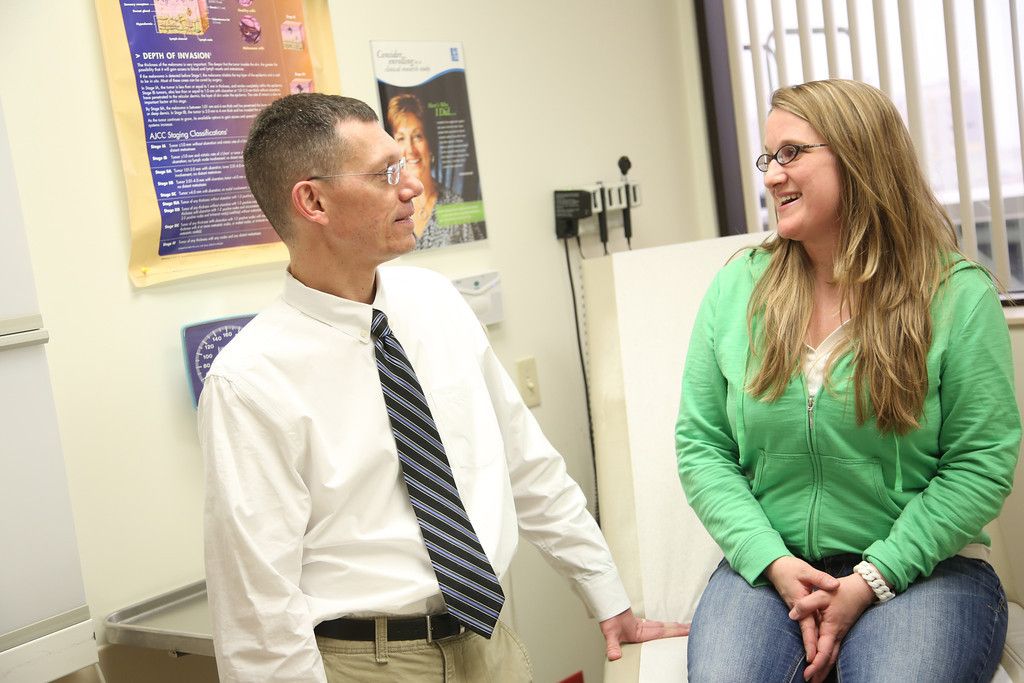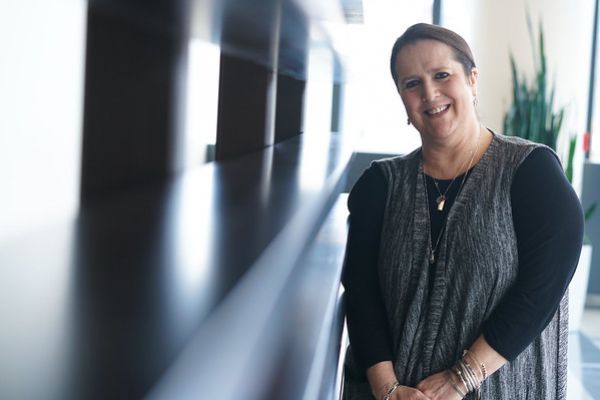Sarcoma cells spread very easily, says John M. Kane III, MD, FACS, former Chief of Roswell Park’s Melanoma/Sarcoma Service. “If they spill from one part of the body into another, they’ll grow.”
Enclosed in a thin membrane called a pseudocapsule, the cells can spill out during surgery or a biopsy, taking root in the surrounding tissues and making treatment more complicated. That’s why patients need to see a sarcoma expert from the very beginning — if possible, even before a biopsy.
But let’s begin with the basics. What is a sarcoma? What are the symptoms? What should you do if your primary care physician thinks you might have a sarcoma?
Q: What is a sarcoma?
Sarcomas come from cells that make up the “glue” of the body, the things that hold you together: muscle, bone, nerve, tendon, fat, connective issue. You can get them anywhere on your body, because you have those cells everywhere.
Probably at least half of them are in the arms or legs — what we call extremity sarcomas. Another 20-30% will be inside the abdomen. You also can get them in your head or neck, and you can get chondrosarcomas of the ribs and chest wall.
You can even get them inside organs; you can get a leiomyosarcoma in the vein in your liver. But it’s not liver cancer — it’s a sarcoma that’s in the liver. It’s important to understand that, because a physician who is not familiar with sarcoma might say, “There’s a sarcoma in this person’s chest; I’ll send them to the chest surgeon.” But you need sarcoma expertise. It’s not based on what part of the body the sarcoma is located in.
Q: What are the symptoms of sarcoma?
A sarcoma may first be noticed as a lump or mass. If the lump is larger than a golf ball, is growing, and is located within the body — in the muscle or abdomen — that’s concerning. Bring it up with your primary care doctor. And remember that sarcomas are often misdiagnosed as other conditions, such as cysts, hernias or hematomas, so if you have any concerns about your diagnosis, get a second opinion from a sarcoma expert.
Never miss another Cancer Talk blog!
Sign up to receive our monthly Cancer Talk e-newsletter.
Q: Can’t any surgeon or oncologist treat sarcoma?
Patients should seek care from a sarcoma expert. Why? Sarcomas are extremely rare. They account for 1 percent of adult cancers and 15 percent of pediatric cancers, so most physicians will see few, if any, during their career. To complicate things further, there are many different types of sarcomas, so the pathologist who examines the tissue to make the diagnosis must also have extensive experience in determining the specific type to ensure that the treatment plan will be correct. Pathology is probably the most important thing. We have two dedicated sarcoma pathologists at Roswell Park.
Our sarcoma multidisciplinary team meets every Monday to review all our new cases of sarcoma or suspicious soft-tissue tumors and brainstorm together. The team includes a surgical oncologist, an orthopedic oncologist, a radiation oncologist, a medical oncologist, a radiologist and a pathologist — and all of us specialize in sarcoma. We discuss the tests and other information, addressing the problem from many different angles to develop the best plan for each patient.
Q: I know someone who lost a leg to sarcoma when she was a little girl. Is that the usual treatment?
Before the 1980s, all extremity sarcomas (in an arm or leg) led to amputation. But research showed that by doing less-radical surgery and combining it with radiation, we could still achieve good outcomes and control the disease.
Today the vast majority of high-risk extremity sarcomas will never need amputation. Many of those patients will need radiation in addition to limb-salvaging surgery. The chances of disease control are the same compared with amputation, but the quality of life is much better.
We see patients from all over the country who have been told elsewhere, “We don’t have any other options for you. You’re going to need your arm or leg amputated.” But we still have an option with isolated limb infusion (ILI). While it’s commonly used to treat melanoma, Roswell Park is one of only about six or seven centers in the U.S. that use it for sarcomas as well.
Isolated limb infusion? What’s that?
When we treat patients with intravenous chemotherapy, we want to deliver the maximum amount to the tumor to destroy it. But the chemotherapy flows through the whole body, so the higher the dose, the more side effects the patient will experience.
Isolated limb infusion is a type of regional chemotherapy, where we use a tourniquet to stop blood flow out of the affected arm or leg. Then we can deliver high-dose chemotherapy just to the area around the tumor. Because the drugs do not circulate outside of the limb, we minimize the side effects to the rest of the body. ILI gives us a chance to do a one-time treatment that we hope will make the tumor go away. Roswell Park is the only center in upstate New York that offers this treatment for sarcoma.
Quality of life is very important. So limb salvage (saving the limb) is a major goal when we’re treating extremity sarcomas.
Dr. Kane was a member of the Soft Tissue Sarcoma Panel of the National Comprehensive Cancer Network, a nonprofit organization of 27 elite cancer centers whose members continually review the latest scientific evidence and apply that information when updating guidelines for physicians to use in diagnosing and treating cancer.


